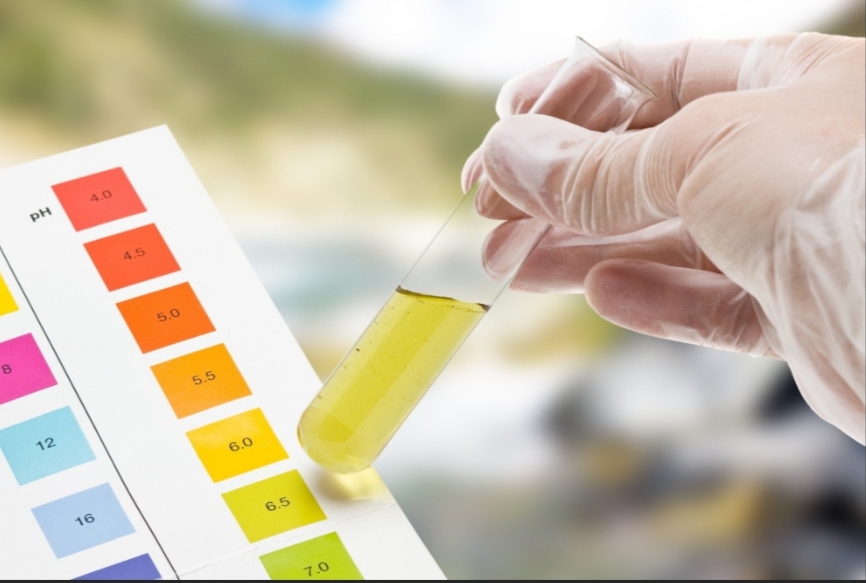Do you constantly experience fatigue, nausea, and vomiting? Maybe you also suffer from sleepiness, headaches, and confusion.
Those are all indications of having an imbalanced pH, which could mean your body is either too acidic or too alkaline. The former can cause acidosis, while the latter can result in alkalosis.
Either condition can lead to symptoms that make managing everyday activities more difficult. For this reason, you must learn how to get your pH balance back to normal if you have acidosis or alkalosis.
This guide provides insights and tips to help you restore your body’s pH level, so read on.
Table of Contents
See Your Doctor for Diagnostic Testing
Under normal conditions, the body’s pH is between 7.35 and 7.45, with an average of 7.40. If it drops below the ideal range, the body becomes “acidic.” If it goes beyond 7.45, it becomes “alkaline.”
The most accurate way to determine your body’s pH is with the help of a medical health professional. Your doctor can run diagnostic exams to determine if you have a pH imbalance and, if so, what type you may have. These tests may include the following:
- Glucose test
- Atrial blood gas
- Metabolic panel
- Urinalysis
- Urine pH
Those tests can reveal if you have acidosis, which can be lactic, diabetic, respiratory, renal, or hyperchloremic. They can also tell your doctor if you have metabolic or respiratory alkalosis. Your healthcare provider needs to know which imbalance you have because they will base your treatment plan on it.
Treat the Underlying Cause
Suppose your diagnostic tests reveal you have metabolic acidosis. It has several causes, including undiagnosed diabetes, which the CDC says affects 8.7 million people in the United States. So, in this scenario, your doctor must confirm if you have diabetes and, if so, treat it first.
Another common cause of acidosis is severe or uncontrollable diarrhea. This gut health problem can be due to inflammatory bowel disease (IBD), Crohn’s disease, and infections. In this case, your doctor must first determine what’s behind your diarrhea and treat it to deal with your acidosis.
As for alkalosis, a common cause is a problem that results in prolonged vomiting, such as gastroenteritis. This can happen as chronic vomiting can result in the excessive loss of stomach acid. So, if you have a health issue that makes you throw up repeatedly, your doctor must treat this first to help restore your body’s pH level.
Follow Your Treatment Plan to a T
Treatment options for acidosis and alkalosis may include medications and supplements. Your doctor may also put you on a therapy program to decrease or increase your pH and restore it to a normal range. For instance, if you have acidosis, your doctor may tell you to take sodium bicarbonate, insulin, and other intravenous fluids.
The most important thing here is to adhere to your treatment plan to get your pH under control as soon as possible. Because the longer it’s out of whack, the more at risk you are for severe health problems, such as those affecting blood pressure and heart functions.
Mind Your Diet
Even if you like alkaline or acidic foods, eating them in moderation won’t drastically affect your body’s pH. However, if consumed chronically in large amounts, they can still affect your body’s pH.
So, once you know what type of pH imbalance you have, you’ll have a better idea of which foods and beverages to avoid.
Examples of Alkaline and Acidic Foods and Beverages
Fruits, vegetables, legumes, and nuts are some foods that increase the body’s alkalinity.
That doesn’t mean you should avoid them altogether if you have alkalosis; you shouldn’t, as they are nutrient-rich foods. Instead, you should just eat them in moderation and incorporate more acidic foods into your diet. These include the following:
- Some dairy products like cheese
- Fresh meats
- Fish and seafood
- Some starchy foods like oat flakes, granola, and brown rice
Some fruits, like those in the citrus family, are acidic, too. However, they’re also rich in vitamins and minerals, so you should still enjoy them in moderation.
You should avoid or limit the intake of unhealthy beverages like soda, spritzers, and beer. They’re acidic, and most also contain high amounts of sugar.
Can Specific Diets Help?
Let’s say your doctor diagnoses you with acidosis.
In that case, consider trying an alkaline diet, which researchers say may help correct or prevent acidosis from re-occurring. Likewise, Mediterranean and low-protein diets may also help with acidosis treatment. Limiting your intake of soda, tea, and coffee, which are acidic, can also help.
If your body’s pH is too alkaline, your doctor may recommend adding nutrient- and potassium-rich foods to your diet.
You can also use a pH meter to monitor the pH levels of foods and beverages you consume. You can learn more about these tools by checking this guide on using a digital food and liquid pH tester in NZ.
Stay Hydrated
Dehydration, especially in severe cases, can result in acidosis and alkalosis. This is why drinking at least 8 to 10 glasses of water daily is imperative to keep your body hydrated. You should also drink more before, during, and after physical activity.
Limit Intake of Alcoholic Beverages
As a diuretic, alcohol increases urine production. When consumed in high quantities, it can force the kidneys to filter more fluids and excrete them through more frequent urination. The longer and more often this occurs, the higher one’s risk for dehydration.
Since dehydration messes with the body’s pH, it’s best to limit or avoid alcohol intake to help restore your pH level.
That’s How to Get Your pH Balance Back to Normal
As you learned in this guide on how to get your pH balance back to normal, the first step is to visit your doctor for screening. This is the most accurate way to determine if you have a pH imbalance, its type, and its cause. From there, your doctor can develop an appropriate treatment plan, including medications, supplements, and dietary modifications.
Lastly, don’t forget to avoid dehydration by drinking lots of water and staying away from alcohol.
For more guides like this, browse our other latest blog posts!














